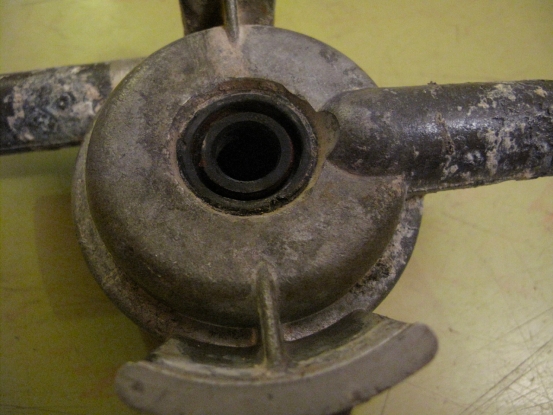Radial shaft seals, also known as lip seals, are used to seal rotary elements, such as a shaft or rotating bore. Common examples include strut seals, hydraulic pump seals, axle seals, power steering seals, and valve stem seals. Early radial shaft seals utilized rawhide as the sealing element, and many present-day elastomeric seal companies were once tanneries. The advent of modern elastomers replaced rawhide, industry also added a garter spring, which helps the sealing lip compensate for lip wear and elastomer material changes.
The seal construction consists of a sprung main sealing lip which has a line contact with the shaft. The line contact is formed by two angles, with the air side angle usually less than the oil side angle. Depending on the seal type these two angles are varied to create a pressure distribution at the seal contact line which has a steeper slope on the oil side of the seal. The shallower the slope on the oil side of the seal, the wetter the seal will run. The spring is positioned such that axially the centerline of the spring is biased to the air side of the lip contact line. These seals can be designed with a wide range of lip configurations to optimize lubrication retention and contaminant exclusion.[1]
In order to exclude contaminants numerous types of dust lips or exclusionary lips may be used. Common elastomers include FKM, ACM, NBR, HNBR, and AEM. In order to resist wear, the compounds' durometer (hardness) is typically 70 to 85 Shore A (between that of an automobile tire and a soft inline-skate wheel).
A different seal design for similar applications is a rotating face seal.
